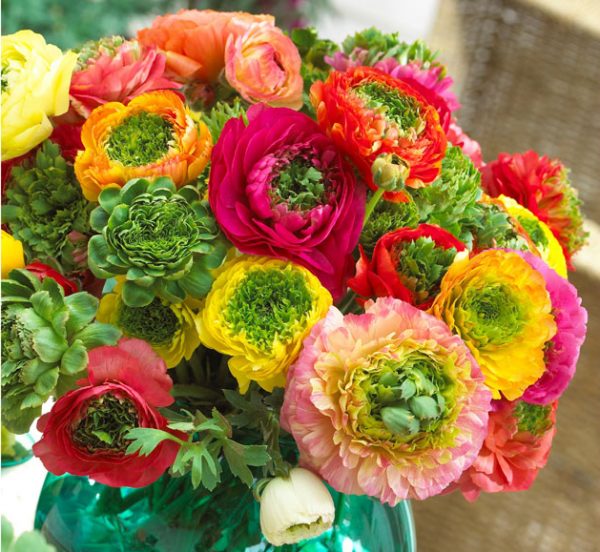
Ranunculus Growing Guide Suttons Gardening Grow How
Ranunculus are best planted in a light, well-drained soil of sand or loam within an acidic, alkaline or neutral PH balance. They are best positioned in an area that receives full sun. Ranunculus are well suited to flower beds, borders, pots and containers within cottage or informal garden styles.
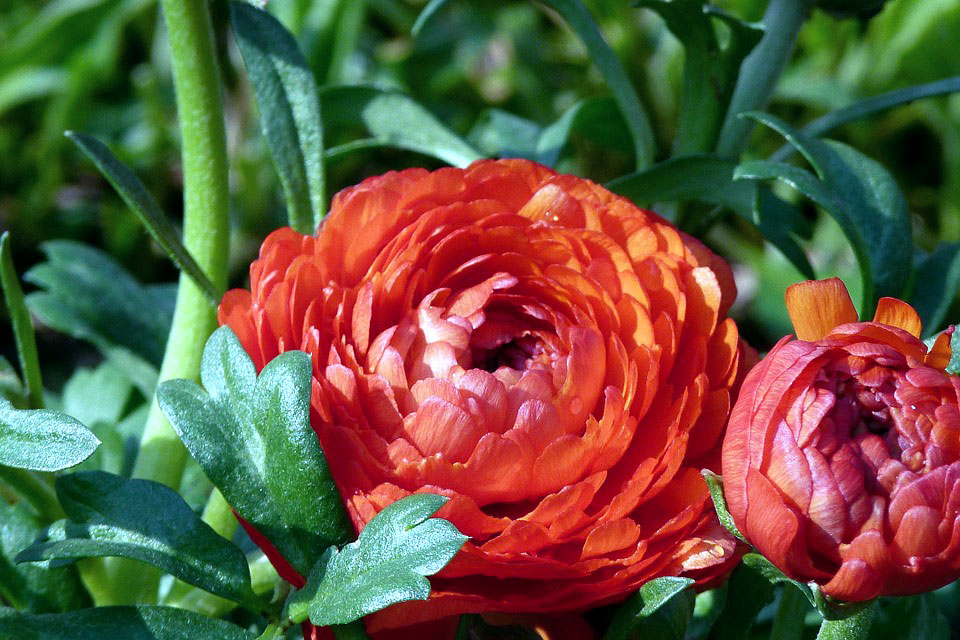
How to grow and care Ranunculus flower Growing Buttercup plants Naturebring
How to grow ranunculus. Ranunculus range from hardy, low growing perennials, useful in borders or meadows, to buttercups that thrive on the edge of ponds and streams. The satin-like petals of Persian buttercups are ideal in containers and as bedding plants but like alpine ranunculus, benefit from specialist care to flower well.

How to Grow Ranunculus 5 Tips for Growing Ranunculus Growing In The Garden
Before planting, it's important to prepare the growing beds. We add a generous dose of compost (2 to 3 in / 5 to 8 cm) and a balanced organic fertilizer (such as Nature's Intent 7-2-4) and mix it thoroughly into the soil. Ranunculus corms are planted 9 in (23 cm) apart at a depth of 2 to 3 in (5 to 8 cm), with 4 rows per bed.
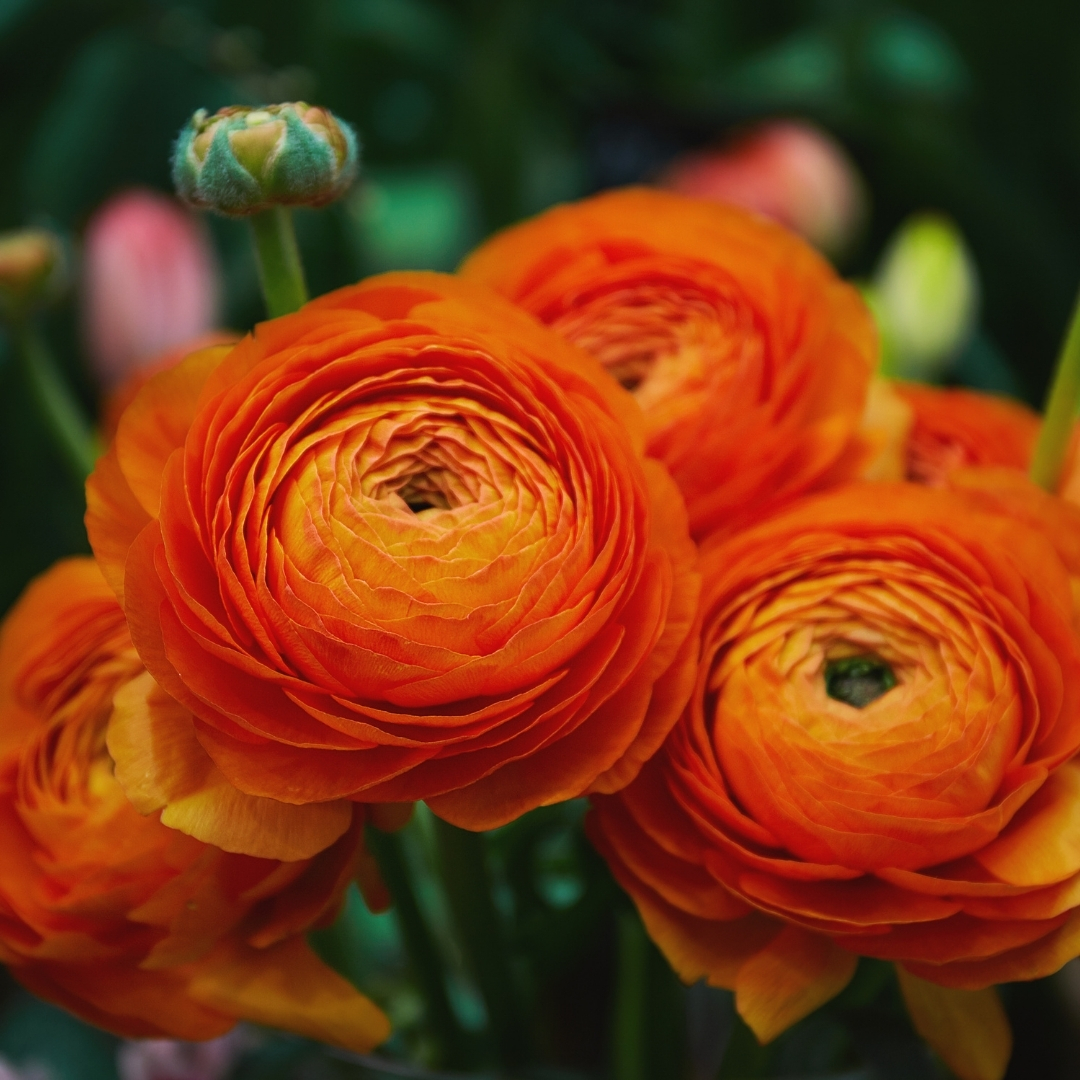
Ranunculus Growing Guide Suttons Gardening Grow How
Ranunculus need a nutrient rich soil and direct sunlight to grow. Before planting, you'll need to prepare the planting area. Start by adding several inches of your chosen compost to the soil. You'll then need to plant your ranunculus corms about 2 inches deep and leave a spacing of 9 inches between each corm.

How to Grow Ranunculus
Ranunculus. Botanical name: Ranunculus. Common name: Buttercup. Ranunculus come in various forms, usually with small bowl-shaped flowers that have glossy yellow or white petals. While some buttercups can be invasive weeds, many are excellent garden plants for borders and containers.

Ranunculi! All About Growing Ranunculus Bulbs Farmer Gracy's Blog
20 Italian Ranunculus Elegance in Gift Box £9.99 Easy to grow. If you've ordered your pack of Ranunculus from Richard Jackson, then you can be sure you've got high quality claws that will give you great results. You need to keep the pack cool and dry until planting time, which does vary depending on where in the UK you live.

How To Grow Ranunculus In Your Garden This Spring Pinecone Cottage Retreat
Plant them about 7cm apart. Cover over with compost and leave in a cool place to start growing. Keep the soil moist, but not soaking wet! 3. When the corms start to show growth and develop leaves, they can be planted in their final growing place. If you are planting them in the Autumn, I would suggest growing them in a greenhouse or polytunnel.
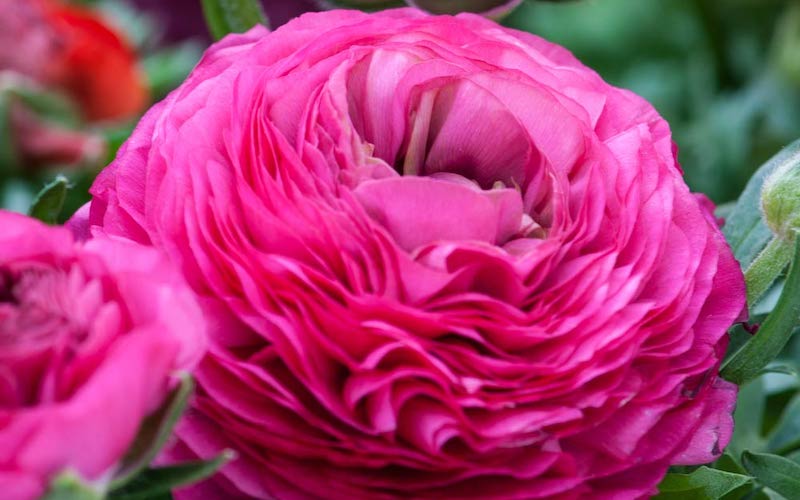
How to grow ranunculus Suttons Gardening Grow How
Plant corms 2-3 inches deep and about 6 inches apart. Place ranunculus corms in the ground with the claws facing down. Fill the hole back in with soil and water well. If you live in a wet climate, you may not need to water again until sprouts appear.Too much moisture in the soil may cause the corms to rot.

How to Plant Ranunculus Bulbs Planting, Growing, and Storing
Try to stand cut ranunculus in deep water for 4 - 6 hours, or overnight. Cut the bottom 1/2 inch off of each ranunculus stem at a 45 degree angle. Remove any lower leaves so that it's only the ranunculus stems in the water. Place the stems in lukewarm water, so that the flowers absorb any nutrients quickly.

How to Grow Ranunculus in Zones 46 Longfield Gardens
How to grow ranunculus. Grow ranunculus in full sun to part shade in moist, well-drained soil. Ranunculus are cold-hardy in USDA zones 8 to 11, grow them as annuals in colder zones. Lots of light. With full sun, lots of organic matter and well-drained soil, ranunculus will look great and produce plenty of flowers. Watch the water
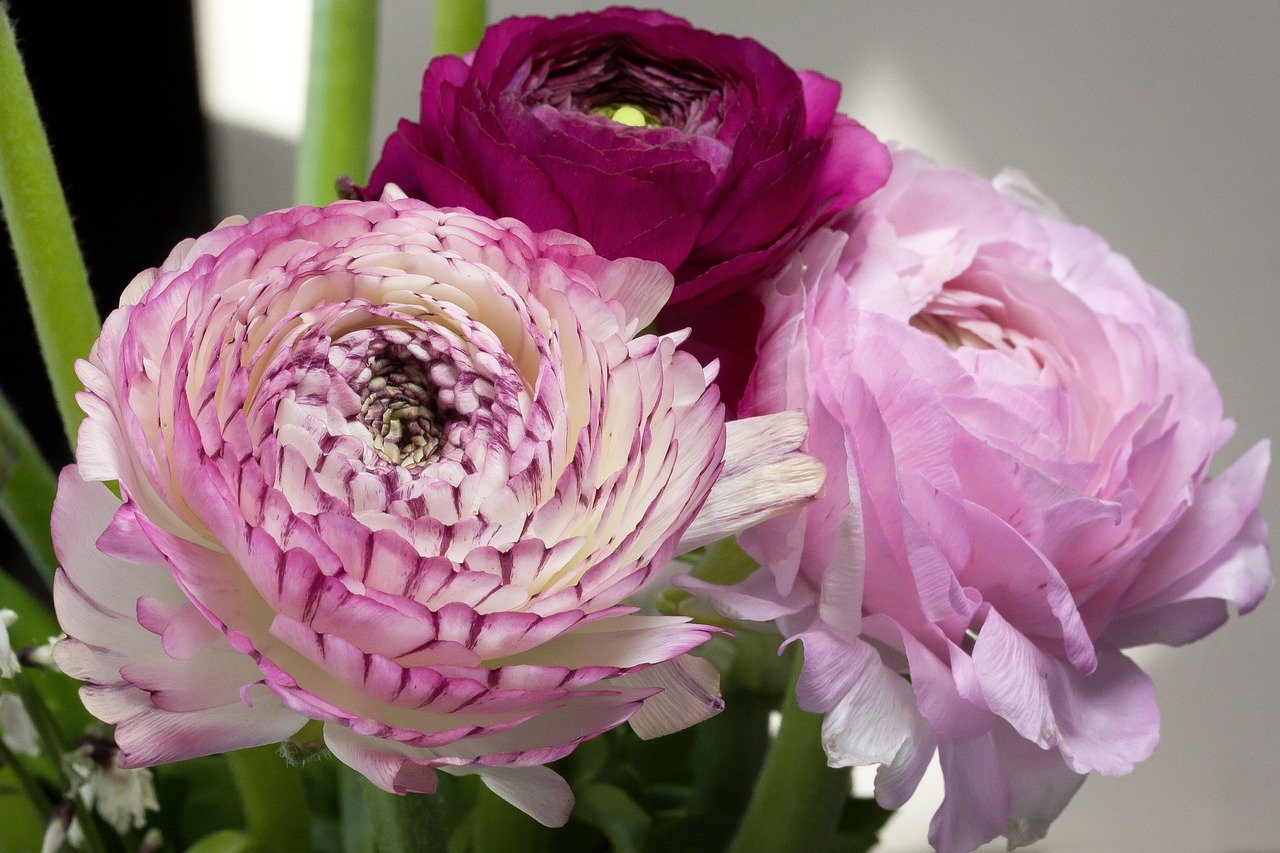
How to Grow and Care for Ranunculus Indoor Home Garden
Ranunculus is a genus of flowering perennial plants, found in the same family as buttercups and larkspur, and native to southern Europe and southwestern Asia. The most commonly grown ornamental ranunculus is R. asiaticus, also known as a 'persian buttercup' or simply 'ranunculus'.

How to Grow Ranunculus 5 Tips for Growing Ranunculus Growing In The Garden
Sprinkle ranunculus seed generously on top of the growing mix, sprinkle a thin layer of the seed starting mix on top of the seeds, and press the soil down gently with your hand. Place the seeds under a grow light and keep the tray at a temperature of 50 degrees Fahrenheit until they germinate in about 20 to 30 days.

How to Grow Ranunculus 5 Tips for Growing Ranunculus Growing In The Garden
Ranunculus prefer to grow in full sun for about 8 hours a day. Ranunculus prefer full sun (at least 6 to 8 hours of direct sunlight per day). In warmer climates, it may be advisable to grow them in part shade. Soil Ranunculus prefer neutral, fertile, drained and light soil. Ranunculus prefer light, sandy loam soils that are well-draining. Soils.
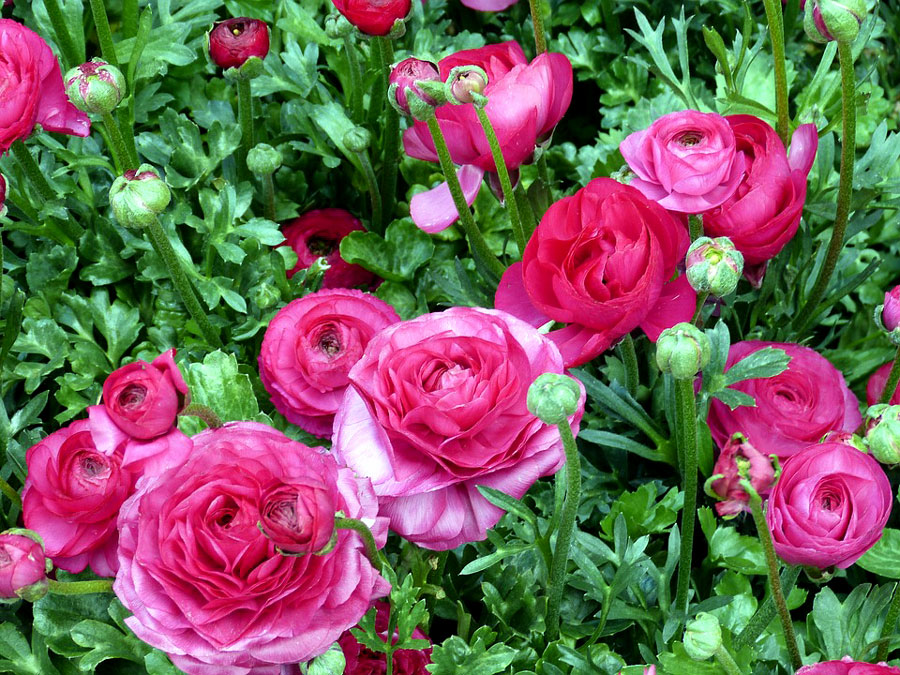
How to grow and care Ranunculus flower Growing Buttercup plants Naturebring
Grow ranunculus in full sun. Well-drained soil or potting compost is essential as the tubers tend to rot in heavy or waterlogged conditions. In pots, use a peat-free multi-purpose potting compost mixed with around a quarter by volume of coarse grit or perlite, then stand pots on gravel or raise just off the ground so excess water drains away freely.

Your Quick and Simple Guide on How to Grow Ranunculuses
See below for instructions on how to grow ranunculus. When you buy ranunculus bulbs they will come as small claw-shaped corns. Before planting, soak the corns in water for two to three hours. Once soaked, plant the corns claws down, 2in deep, into individual pots filled with potting compost mixed with some grit to aid drainage..
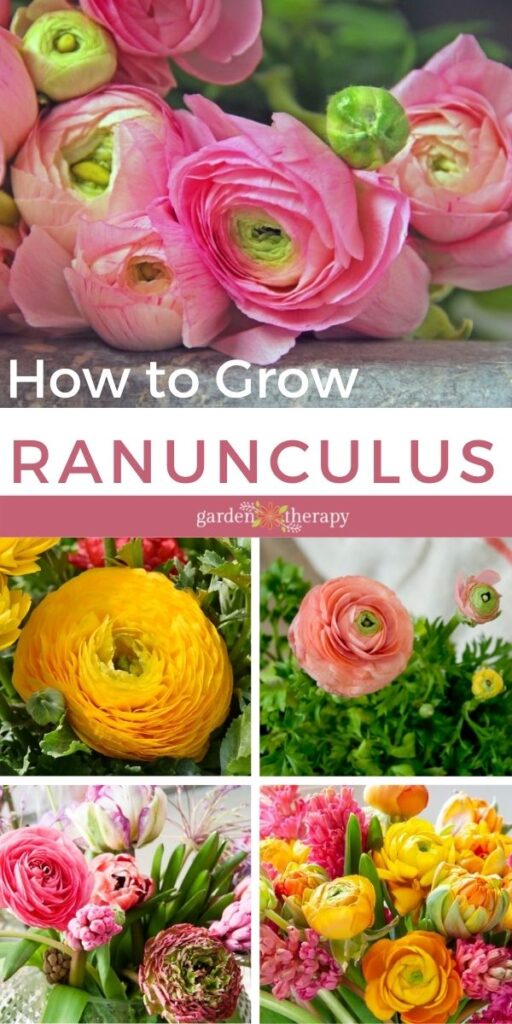
The Ultimate Guide to Growing Ranunculus Garden Therapy
How to Grow Ranunculus in Outdoor Garden Beds A sunny site with rich, well drained soil is ideal for growing ranunculus. If the ground is susceptible to puddles after hard rains, it's advisable you enhance the drainage and raise the soil level by adding at least 2-3 inches of compost, peat moss or other organic material.